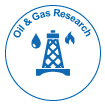Using Genetic Algorithm to predict the suitable light intensity for best influence on lipid characteristics and fatty acid profile of freshwater Microalgae for biodiesel production
*Corresponding Author:
Copyright: © 2020 . This is an open-access article distributed under the terms of the Creative Commons Attribution License, which permits unrestricted use, distribution, and reproduction in any medium, provided the original author and source are credited.
Abstract
The present study was purposed to predict the suitable light intensity on the lipid Accumulation properties of a freshwater microalga Chlorococcum Oleofaciens KF584224.1 to get the highest lipid content. Based on some previous studies and gathered data for light intensity, by using Genetic Algorithm via R programming language, we predicted that if we cultivate the body of these microalgae species at two different light intensities (200 and 400 μmol photons m-2s-1) then we will get the highest lipid content at highest probability. In continuation, the microalga was isolated from a freshwater body and cultivated at five different light intensities of 50, 100, 200, 400, and 800 μmol photons m-2s-1 for 20 days. Once algae reached the stationary phase, the maximum biomass productivity (367.82±4.26mgL-1d-1) was found in culture illuminated with 200 μmol photons m-2s-1, while the highest lipid content (59.18±1.62%) and lipid productivity (126.72±3.27mgL-1d-1) were achieved in culture illuminated with 400 μmol photons m-2s-1. The properties of biodiesel obtained from C. oleofaciens cultured fewer than 50 μmol photons m-2s-1 met the specifications provided by the international biodiesel standards (European EN 14214 and US ASTM D6751), higher light illumination improved the biodiesel quality which makes C. oleofaciens as a potential feedstock for biodiesel production especially under 400 μmol photons m-2s-1 light intensity.

 Spanish
Spanish  Chinese
Chinese  Russian
Russian  German
German  French
French  Japanese
Japanese  Portuguese
Portuguese  Hindi
Hindi 


